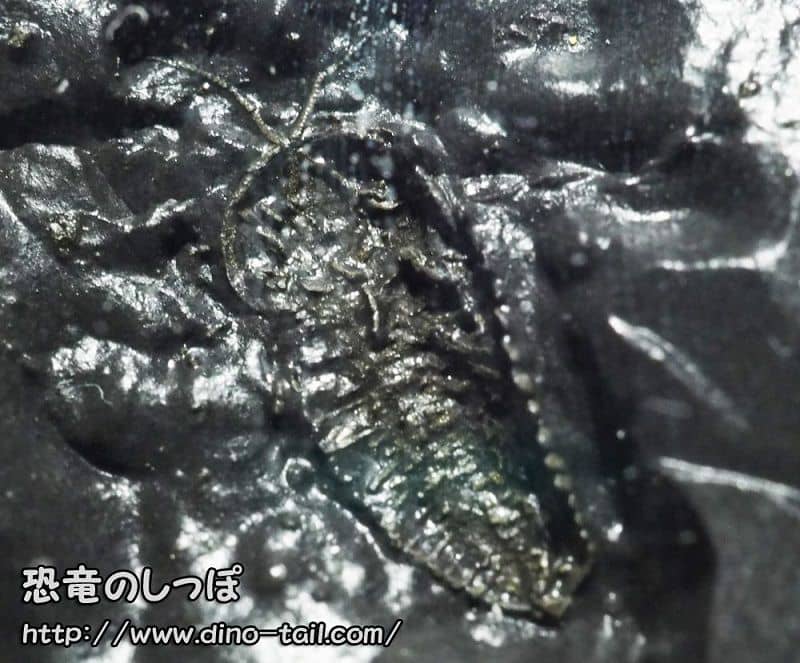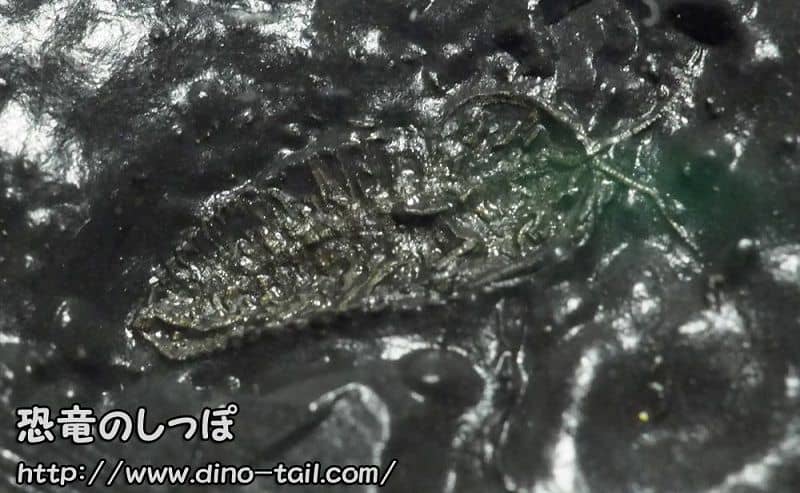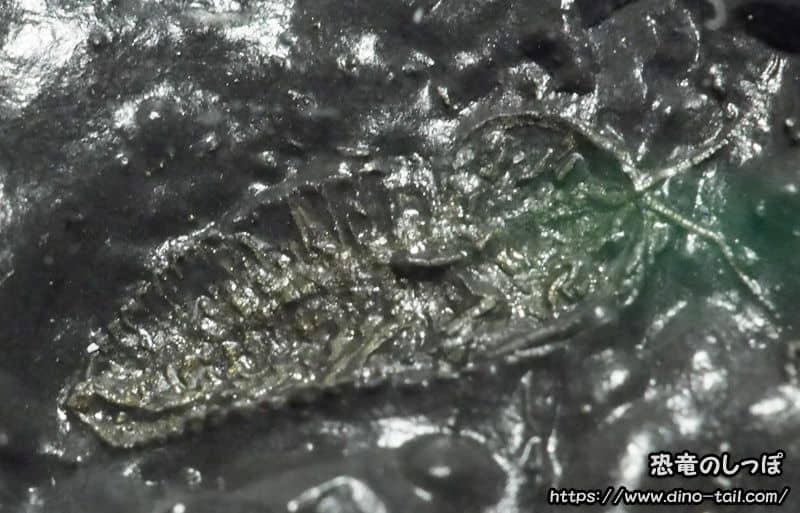About Triarthrus (Trilobite)
| Scientific Name (Genus) | Triarthrus |
| Classification | Trilobita, Ptychopariida, Olenina |
| Total Length | 2 - 5 cm |
| Diet | Unknown |
| Period | Late Ordovician |
| Sub-classification / Species Name |
Triarthrus beckii
Triarthrus billingsi Triarthrus eatoni Triarthrus huguesensis Triarthrus latissimus Triarthrus rougensis, etc. |
| Year of Paper Publication | 1832 |
Features: The "Rosetta Stone" of Trilobites
Triarthrus is a trilobite that lived in the seas of the Late Ordovician. However, fossils discovered from a specific location have made it an extremely important existence in trilobite research.
A Miraculous Fossil Site: "Beecher's Trilobite Bed"

From Lorraine Shale, NY, USA
My Collection
The secret to these important specimens lies in a special layer within the "Lorraine Shale" in New York State, called "Beecher's Trilobite Bed." At that time, the seabed in this location was an anoxic environment where even the bacteria that decompose dead organisms could not survive.
It is likely that a storm or similar event suddenly churned up the seabed, burying a swarm of living Triarthrus in the mud in an instant. Then, in the anoxic environment, their soft tissues were replaced by the mineral pyrite without decaying. Because of this miraculous combination of conditions, antennae, legs, and digestive organs, which are not normally preserved, have been preserved. The living appearance of the trilobite was sealed away.

From Lorraine Shale, NY, USA
My Collection (purchased in 2016). Reverse specimen. Because the antennae, legs, and internal structures are preserved by pyritization, there is a risk of rusting due to moisture. This specimen has been coated with a chemical to prevent deterioration.
The "Anatomy" of a Trilobite Revealed by Fossils
These pyritized fossils have dramatically improved our knowledge of the anatomy of trilobites.
- Legs and Gills: It was revealed for the first time that each body segment had a pair of legs, and that the upper part of the legs had feather-like filamentous gills.
- Antennae: A pair of long, flexible antennae extending from the head was confirmed.
- Digestive Tract: Traces of the digestive tract through which food passed were also preserved.
- Reproduction (Eggs): Surprisingly, individuals have even been discovered with unfertilized eggs held under their heads, providing clues to the reproductive ecology of trilobites.
The Triarthrus site in New York where specimens with legs are found is currently closed to the public. The land is owned by universities and research institutions, and future excavation is awaited. The distribution of trilobites with legs from this site to the market will be restricted.
At major domestic mineral shows where dealers from Japan and abroad gather, they were sometimes sold for 60,000-150,000 yen until around 2016, but they have become rare recently. Reverse specimens, which allow for easier observation of the legs and internal structures, are said to be even rarer and more expensive.
Triarthrus Stamp and Fossil Gallery


